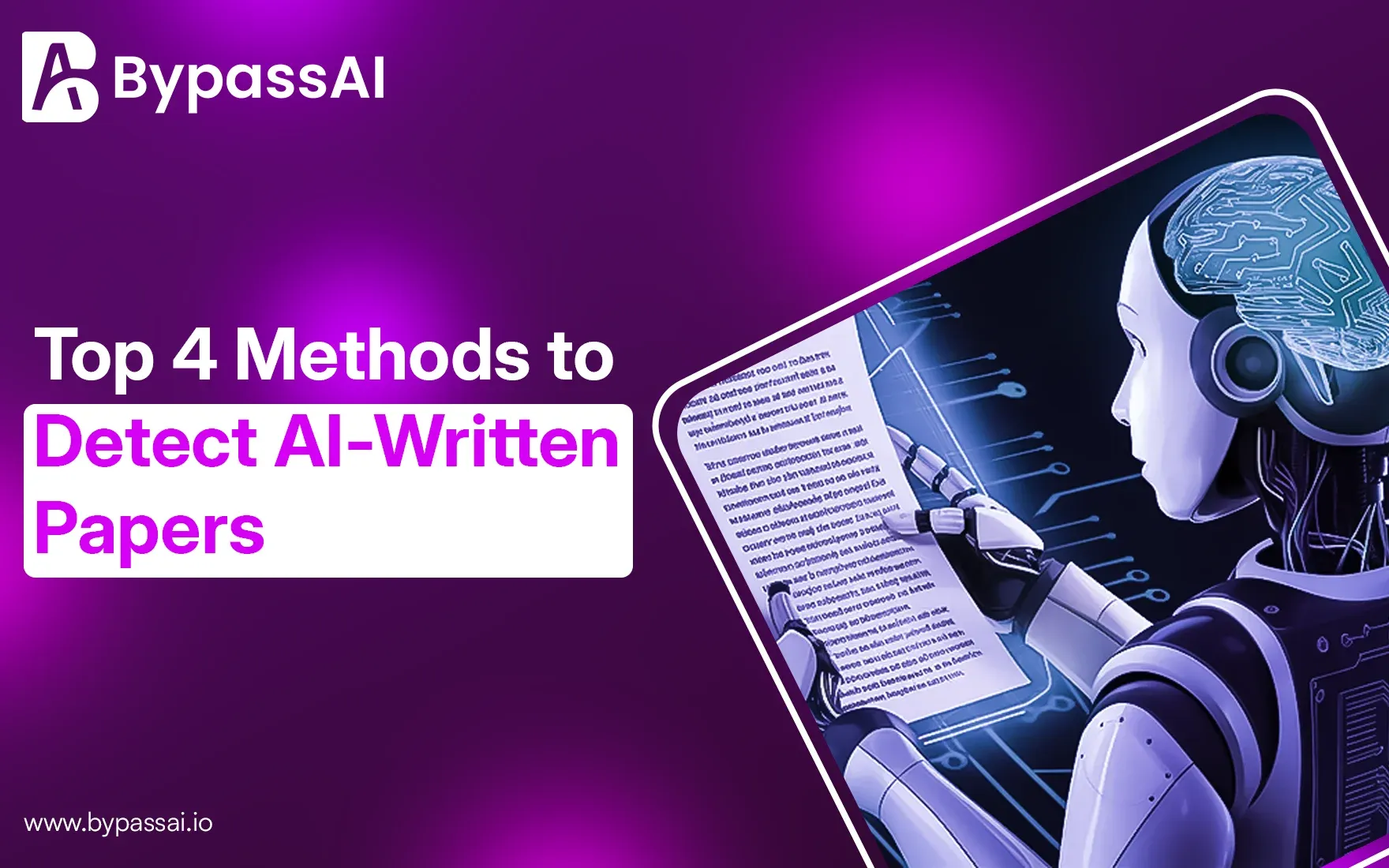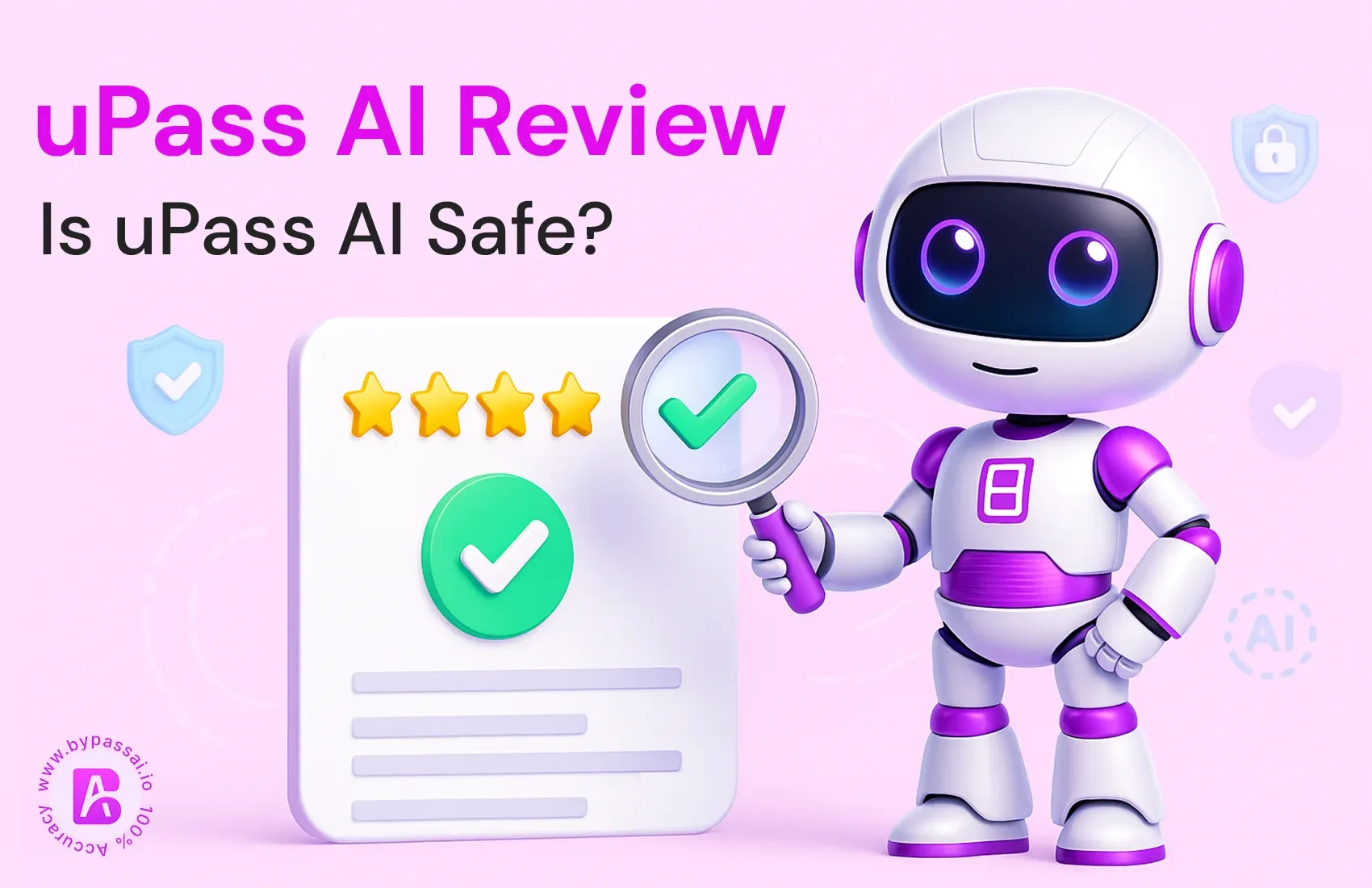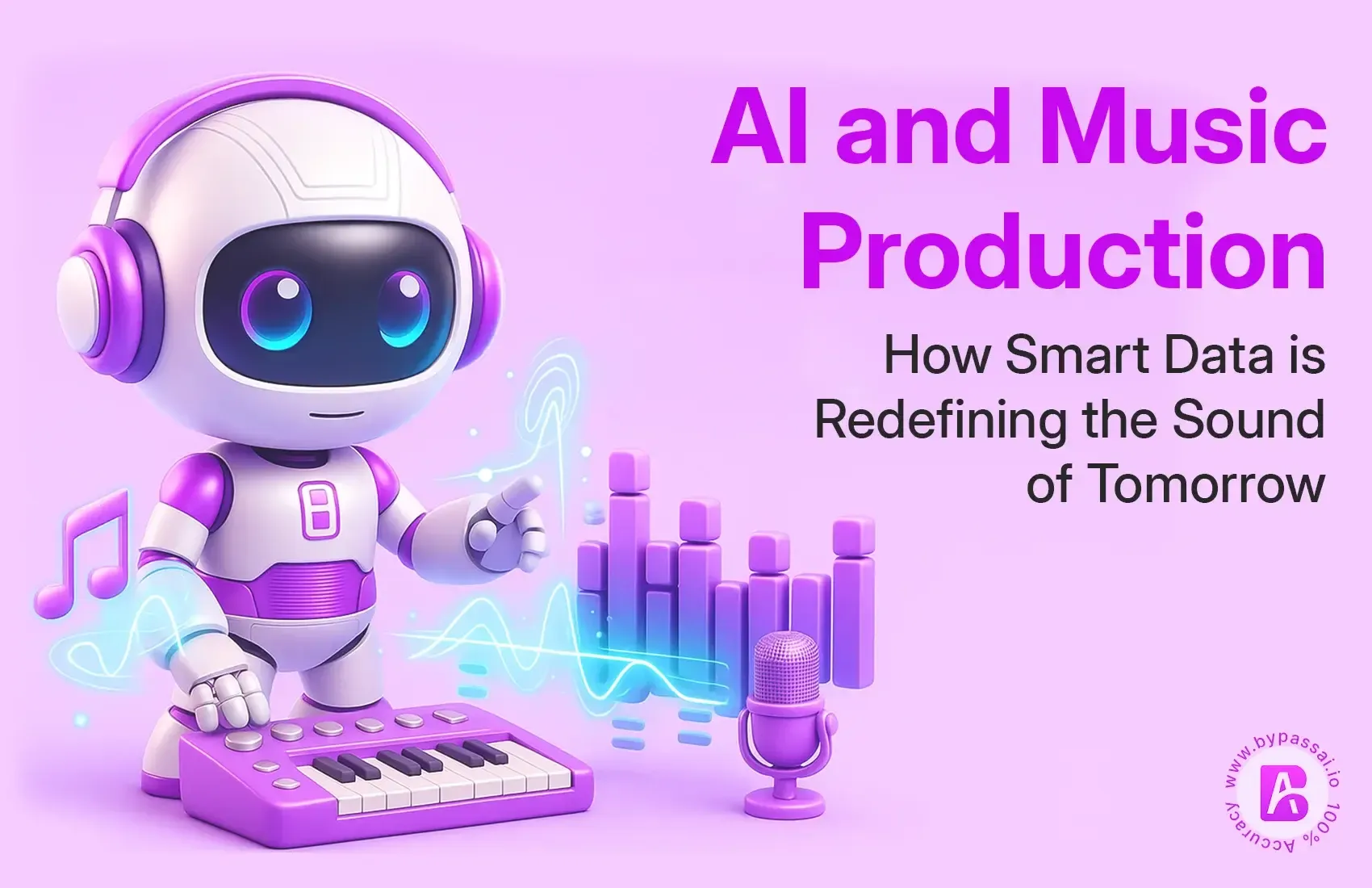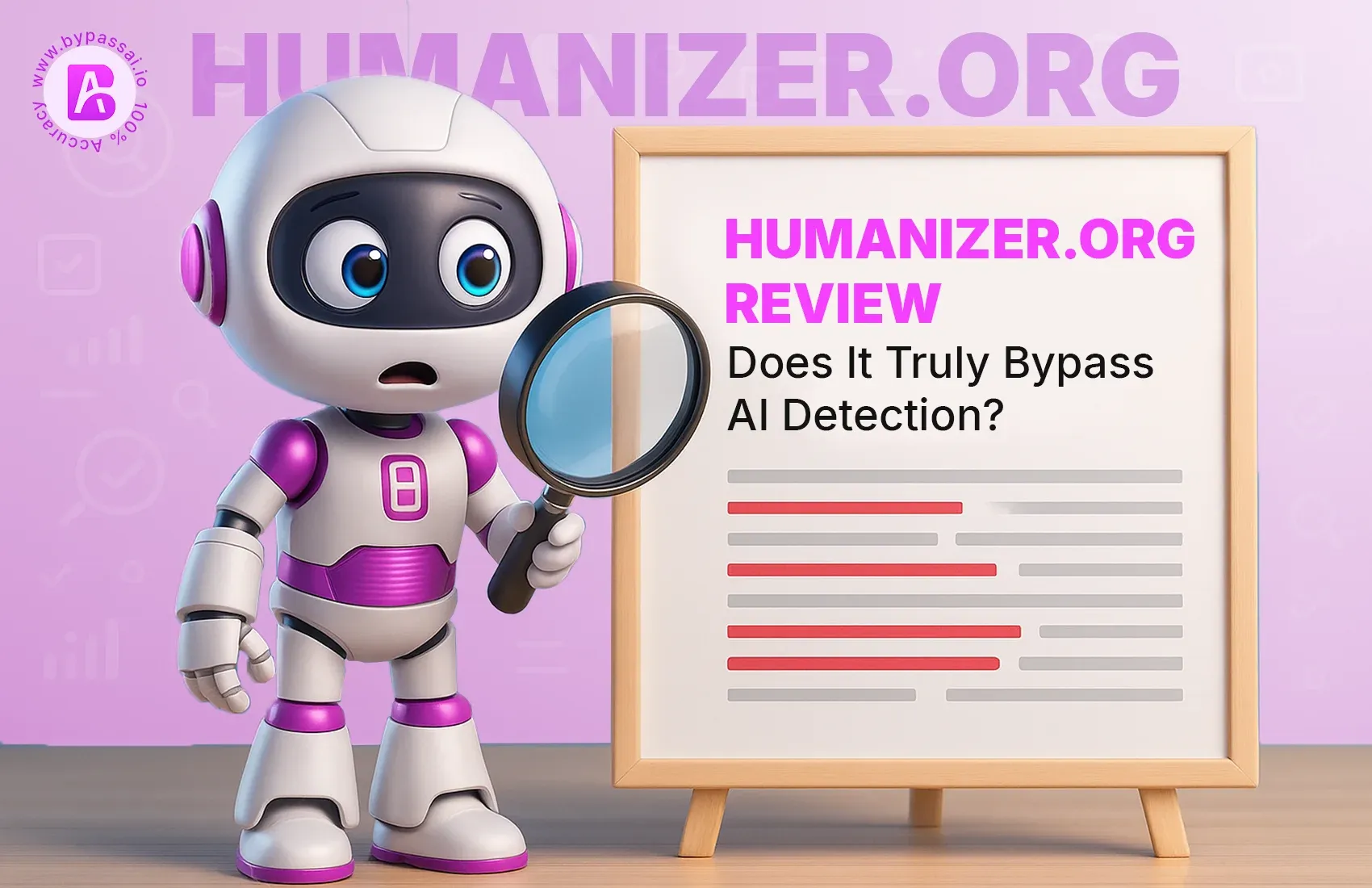Sign In
Welcome to Bypass AI! Sign in to continue your exploration of our platform with all its exciting features.
Forgot Password?
Don’t have an account ? Sign up
Sign Up
Embrace the Future with Bypass AI! Sign up now and let's rewrite the possibilities together.
You have an account ? Sign In
Enter OTP
We’ll send you an OTP on your registered email address
Back to Login
Forgot Password
We'll Send You An Email To Reset Your Password.
Back to Login
Enter OTP
We'll send you an email to reset your password.
Back to Login
Confirm Password
Please enter your new password.
TABLE OF CONTENTS
Quick Summary
Understanding Artificial Intelligence in Writing
How AI Writes Like Humans
Challenges of Spotting AI Writing
Conclusion
FAQs
AI's increasing use in making content has changed the way we create and read written work. Even though AI gives fantastic advantages, it also presents hurdles in maintaining the uniqueness and truthfulness of the content. This piece seeks to teach readers ways to spot papers written by AI. This allows them to make knowledgeable decisions on where the content came from.
Quick Summary
AI plays a big role in creating content these days. So, it's crucial to make sure what's written is real. This piece looks into five top ways to spot AI-authored articles. They are: studying how complex the language is, looking at how sentences are formed, seeing if the text makes sense, checking if work is copied, and using AI detection tools. Through these methods, you'll be better equipped to decide where content comes from. Plus, you'll help keep school and work material honest.
Understanding Artificial Intelligence in Writing
AI writing means using artificial intelligence to produce written work. It relies on machine learning, the part of AI that helps computers learn and act like humans.
AI writing systems use large samples of language to produce text that appears to have been written by a human. This is done by responding to the user’s request.
These systems have improved, resulting in smoother and more natural AI writing means using artificial intelligence to produce written work. It relies on machine learning, the part of AI that helps computers learn and behave like humans.
How AI Writes Like Humans
AI has the ability to compose text similar to humans by studying complex language models and then producing sentences from patterns it recognizes in massive data groups. These models shine in crafting uniform, context-dependent material, which is typically liked by users due to its clearness and simplicity. However, even if people accept AI-created content, it doesn't fully replicate the insightful comprehension and originality of human authors.
Also read this article : A list of 10 AI content detection tools
Challenges of Spotting AI Writing
Getting to grips with AI coding involves knowing the subtle aspects of language that AI can copy. Sure, AI can mirror our writing style. But, it usually falls short in catching the smart, inventive, and heartfelt tones in texts written by us humans. Studying the art of writing with AI needs a good eye for detail and the ability to think things through.
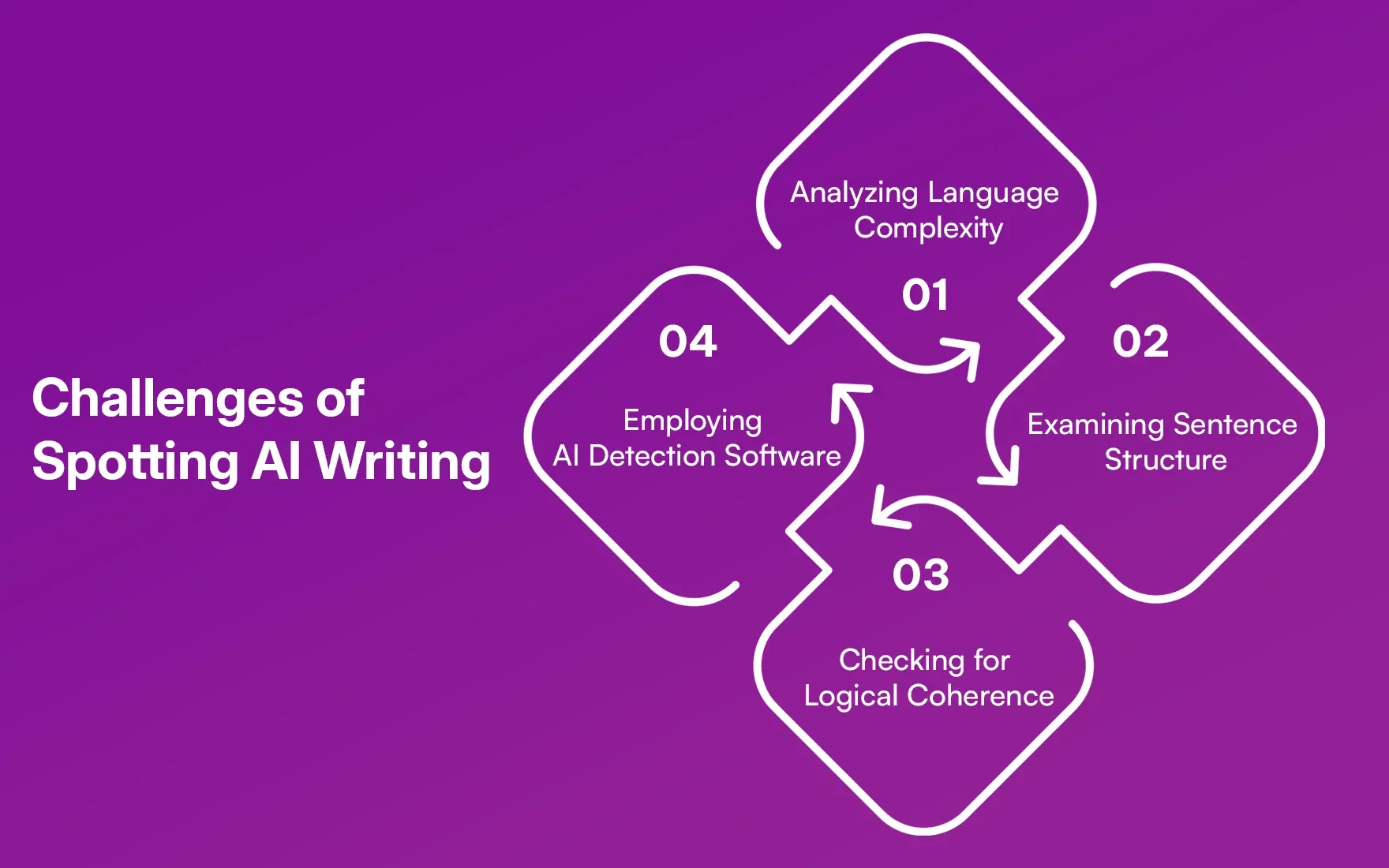
Method 1 : Analyzing Language Complexity
One way to analyze the effects of AI is to analyze the complexity of the language used in the text. Let’s explore how this approach works.
- Understanding Language Patterns
AI can use common patterns or complex vocabulary that differs from conventional human writing. This means that if you read a text and see unusually complex language or repeated patterns of structure, it could mean artificial intelligence is responsible for its content.
- Tools for Language Complexity Analysis
Several online tools can help analyze the complexity of the data and identify potential AI effects. These tools can take into account word count, sentence structure, and language structure in general to determine whether a text exhibits characteristics typically associated with AI-generated text.
Method 2 : Examining Sentence Structure
Spotting AI in writing can be as simple as observing sentence structures. If sentences feel a bit too stiff or odd, it could be AI's handiwork. These lines often miss the easy-going rhythm and subtle details of human writing, possibly hinting at computer origin.
- Comparing Variations in Sentence Types
One method to tell if writing comes from AI is examining sentence variety. AI often depends on set guidelines and formats, resulting in an absence of different sentences. Studying the makeup of sentences in a document can highlight any rigid or recurring trends that suggest an artificial intelligence origin.
Method 3 :Checking for Logical Coherence
Clear thinking is crucial in writing. This guarantees the writer’s thoughts glide easily, clear to readers. Spotting AI-created content? Keep an eye out for this logical flow.
- Inconsistencies in Argumentation
Spotting AI-made content can be as simple as scrutinizing the pointed arguments. AI tends to weave text with logically muddled arguments or thoughts that seem off-track. This jumbled coherence could be a tip-off that the content is a computer's creation, not human-crafted.
- Evaluation of Flow and Connectivity
Checking if ideas flow well and seeing how paragraphs are linked might reveal if a text is made by AI. If there are holes in the logic or sudden jumps in thought, it might mean a computer created the content. Humans usually link their ideas in an order that makes sense, so any weird breaks might point to AI's handiwork.
Method 5 : Employing AI Detection Software
Tools like specialized AI detection software are super helpful when trying to spot AI-produced content. These software pieces have clever formulas built to find artificial intelligence in writing. This gives us a dependable way to tell the difference between text written by a person and text crafted by a computer.
- Functionality of AI Detection Tools
How do AI detection tools work? Simple, they scan the unique features of text to check if an AI wrote it. These tools look at patterns, how words are used, and style details. This way, they can tell if a robot, not a human, crafted the words.
- Integration of AI Detection Software
Experts and scholars can easily merge AI recognition programs into their routine tasks. This adds a check for validating the realness of articles or texts. By using these aids, people can boost their skills in spotting text created by AI. This helps in preserving the honesty of their work.
Conclusion
Obtaining AI-powered documents requires a multi-pronged approach. The integration of linguistic complexity analysis, sentence structure analysis, semantic consistency analysis, plagiarism analysis, and AI recognition software can improve the recognition accuracy of AI-generated content As AI technologies evolve , informed adjustments to ensure data accuracy are critical.
Protect Your Content's Integrity. Our AI detection tool safeguards your website by uncovering hidden AI-generated content. Trustworthy, reliable, and always up-to-date.
FAQs
1. How do I check if a letter was written by an AI?
Use AI identification tools, analyze complex language, and check logical coherence to identify AI products.
2. What tools can help identify AI-encoded content?
Tools like GPTZero, Copyleaks, Hemingway Editor, and plagiarism checkers are effective at identifying AI-authored articles.
3. How does AI writing differ from human writing?
AI writing can lack emotional depth, creativity, and sentence structures, making it different from human writing.
4. Can AI products be stolen?
Yes, AI models can inadvertently recreate existing objects, leading to unintentional theft.
5. Why is it important to analyze AI-authored documents?
To maintain integrity, it is important to ensure content is authentic and original in academic and professional settings.

